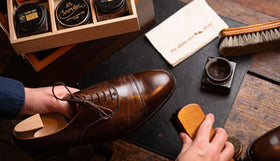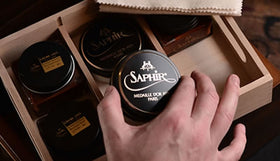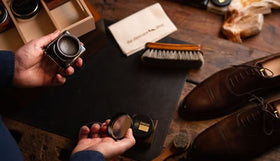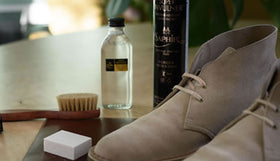Always wanted to dye a pair of leather shoes yourself? Well you can! Whether you have buyers remorse due to a pair you bought in a certain colour you ended up not liking or if your shoes are damaged/faded up to a point they can use some new colour. In this guide we focus on how to recolour your shoes with Saphir Teinture Francaise. The following steps will explain everything you need to know on how to prepare for colouring, the recolouring itself and how to finish your shoes after the dye has been applied.
*Disclaimer: Please note that dyeing leather shoes is not an easy job. It requires some practice to do it well. We recommend doing a trial run on a worn out pair of shoes that you would otherwise throw away.
Introduction
How to dye a pair of shoes
(English subtitles)
Removing old shoe polish and factory finish
We first need to strip the shoes from as much shoe polish as possible. A product which does this perfectly is Saphir Renomat. Apply the Renomat with the included applicator cloth and rub it into the shoes. You will notice that all shoe polish from the shoes will end up on the cloth. Apply and rub the whole shoe for about two times, normally, this should be sufficient.
Now we are ready to start attacking the factory finish on the shoes. Pulling out the old dye out of the leather can best be done with Saphir Decapant. This can take quite a while and due to the vapors we recommend working outside or in a well ventilated room. Keep rubbing the leather with Saphir Decapant until you see no more colour bleeding onto the cloth. Use a cotton swab to get in between the sole and upper of the shoes.
Prepping and mixing colours
Start by getting all your brushes and/or cotton cloth ready. You have to decide for yourself which brushes you need. If you have a pair of shoes with a lot of small details on them we recommend getting a smaller brush for the details and a bigger brush for an even distribution of the dye on the larger areas. Saphir Teinture francaise comes with a cotton ball which we prefer to dye larger areas with.
We recommend diluding the dye using colour 00 leather dye. That way you have more control over the depth of colour. The more layers you apply the deeper/darker the colour will get. Usually we recommend mixing around 40% of 00 colour lightener with the colour dye you are using. Please note that Saphir only has a few colours available and that you have to mix colour to create the colour you want. Always test the colour first on a piece of paper to see if it is to your liking after it has dried.
Dyeing the shoes
It is finally time! We are going to put some dye on the shoes. Apply the Teinture Francaise leather dye using the cotton swab included with the dye. Squeeze out any excess dye out of the swab before applying. You want a light, but still even coating each application. Dye the entire shoe and colour hard to reach places using a small brush. Most likely you are going to have to apply a couple of layers to obtain a rich and deep colour.
After the first layer the colour will be quite spotty and will show streaks. This is normal. On average, you need to do 3-4 applications to get an even result. And even then some of the spotting will only dissapear after using shoe polish. After applying a layer of dye be sure to let the shoes dry for at least an hour in between. Usually the darker colour of dye the easier it is to get an even finish (such as dark brown or black).
Conditioning the leather
The solvents used to clean the leather can be quite harsh on the leather. The dye is also alcohol based which also dries out leather. Hence you need to put some oil and nutrients back into the leather and there is no better time than now because the leather is fully exposed and has no protective waxes on it.
We recommed using Saphir Médaille d'Or Renovateur to fully condition the leather before moving on with their first shine session.
Shining and colour corrections
With Saphir Médaile d'Or Pommadier cream you can further finetune the colour of the shoes. You probably noticed after using Renovateur that some of the spots already have dissapeared. That usually is because these were dry spots in the leather. We recommend picking a well matching colour Pommadier shoe cream. Be sure to check out our Saphir colour guide to help you make the right choice. Did you apply a lot of patina or darker highlights on the shoes? In that case use a neutral Pommadier cream to highlight those even further.
Apply the cream and try to really massage it into the leather using a cloth. That way you massage the pigment into the leather. Allow the cream to adhere to the leather for about 5 minutes. Afterwards, use a horsehair brush to shine the shoes. Feel free to repeat this step 2-3 times depending on your results.
High gloss finish and waterproofing
Use Saphir Médaille d'Or Pate de Luxe to create a waterproofing high gloss finish on your shoes. Begin by applying a very thin layer of Saphir Medaille d'Or Pate de Luxe shoe wax. Be sure to spread the wax over the shoes as thin as possible. Afterwards, shine your shoes with preferrably a cotton cloth (or a brush) to shine up the wax polish on the shoes. For new shoes or shoes that haven't been shined recently it can be beneficial to repeat this step once more after you are done.
Are your shoes fitted with leather soles? Then also give your sole edges a shine using Saphir Médaille d'Or Pate de Luxe.
Recommended products
-
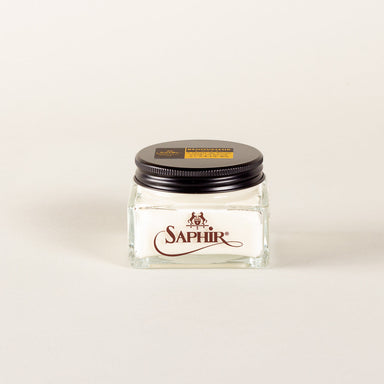
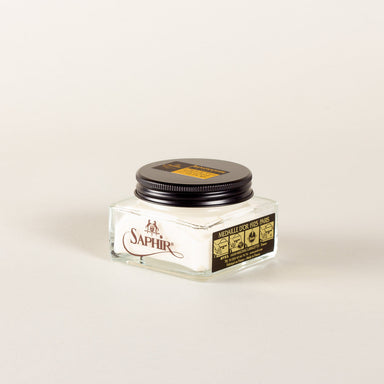 Saphir Médaille d'Or
Saphir Médaille d'OrRenovateur
€18,75Saphir Médaille d'Or Renovateur, 75ml. Colourless renovating cream. This cream is perfect to restore your leather shoes or other goods. We advise y...
View full details -
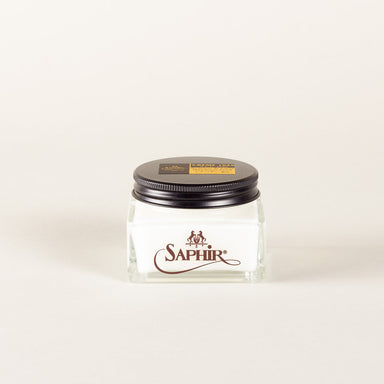
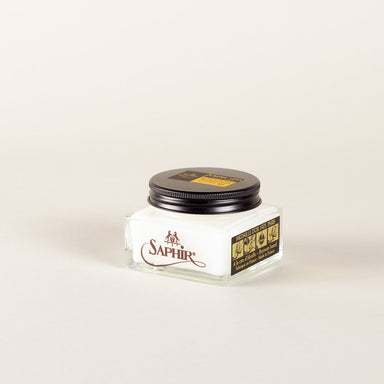 Saphir Médaille d'Or
Saphir Médaille d'OrPommadier shoe cream
€17,7526 colors availableSaphir Médaille d'Or Pommadier shoe cream, 75ml: The Pommadier cream shoe polish is enriched with animal (beeswax) and vegetal wax. This very elabo...
View full details -
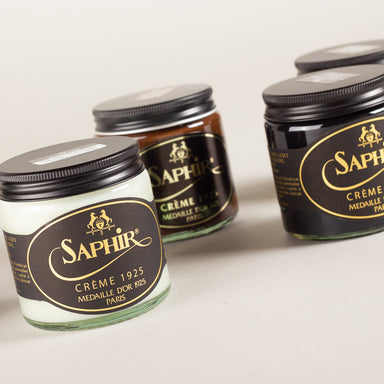
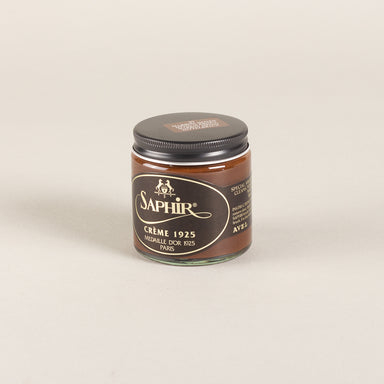 Saphir Médaille d'Or
Saphir Médaille d'OrPommadier shoe cream 100ml
€21,406 colors availableSaphir Médaille d'Or Pommadier shoe cream, 100ml. Saphir Médaille d'Or Pommadier shoe cream is a shoe polish enriched with animal (beeswax) and veg...
View full details -
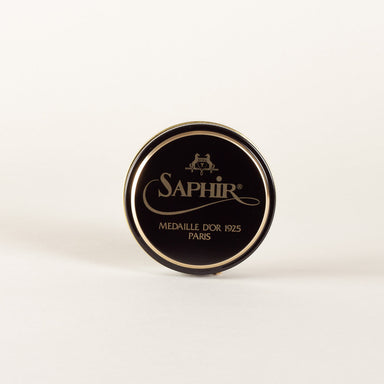
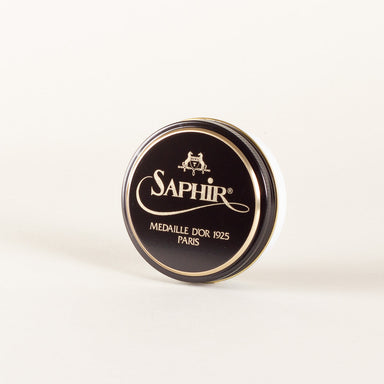 Saphir Médaille d'Or
Saphir Médaille d'OrPâte de Luxe shoe wax 50ml
€10,1512 colors availableSaphir Médaille d'Or Pate de Luxe Wax 50ml. This luxurious shoe wax is 100% natural and contains several different types of wax, such as from anima...
View full details -
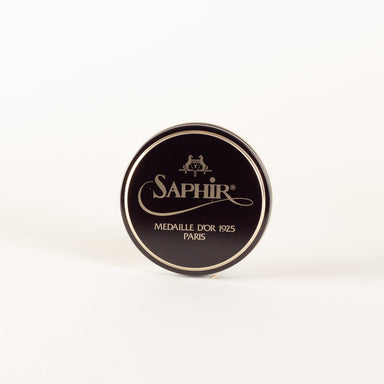
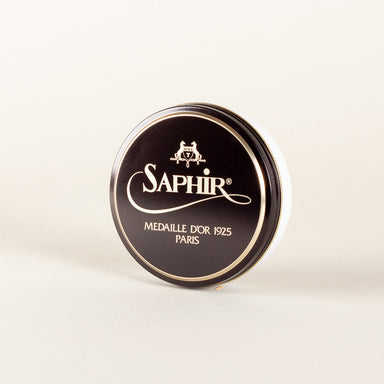 Saphir Médaille d'Or
Saphir Médaille d'OrPâte de Luxe shoe wax 100ml
€18,2513 colors availableSaphir Médaille d'Or Pate de Luxe Wax, 100ml. Does best: Creating shine Also great at: Protecting and nourishing Most used for: Most smooth leath...
View full details -
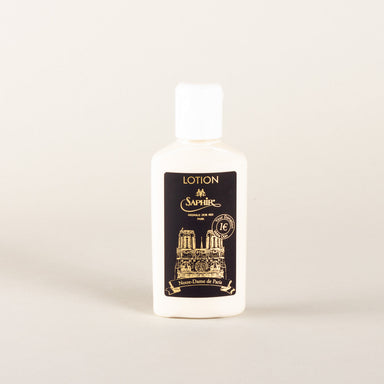
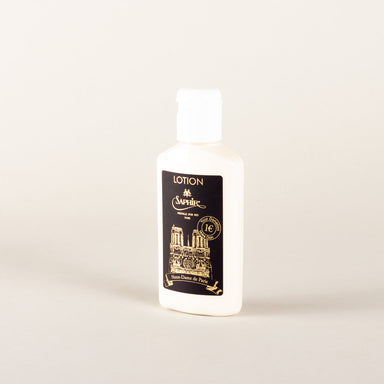 Saphir Médaille d'Or
Saphir Médaille d'OrLotion
€17,00Saphir Médaille d'Or Lotion, 125ml. We advise to use Saphir Lotion as a first step in the treatment of your smooth leather shoes, when you're not g...
View full details -
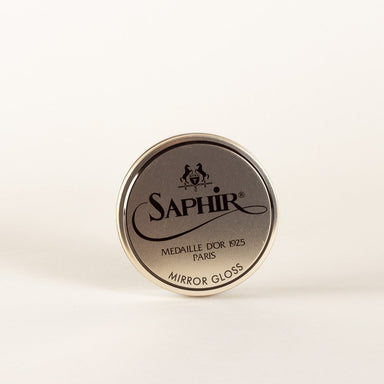
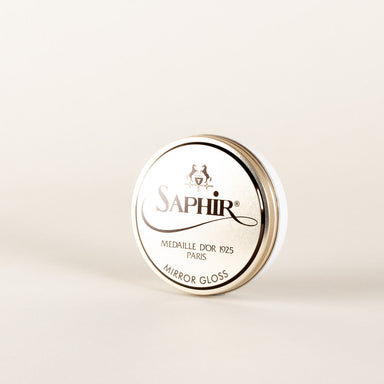 Saphir Médaille d'Or
Saphir Médaille d'OrMirror Gloss wax
€23,257 colors availableSaphir Medaille d'Or Mirror Gloss Shoe Wax. This shoe wax by Saphir Médaille d'Or is a combination of natural hard waxes used to quickly build up a...
View full details -
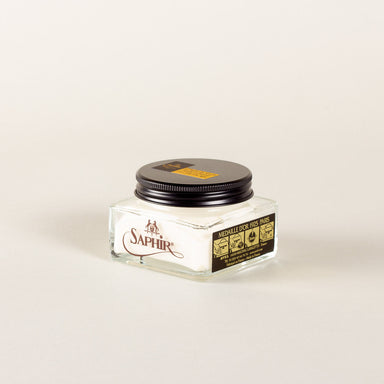 Saphir Médaille d'Or
Saphir Médaille d'OrVegetable tanned leather cream
€20,00Saphir Médaille d'Or vegetable tanned leather cream 75ml This cream has been specifically developed for cleaning and nourishing vegetable-tanned le...
View full details -
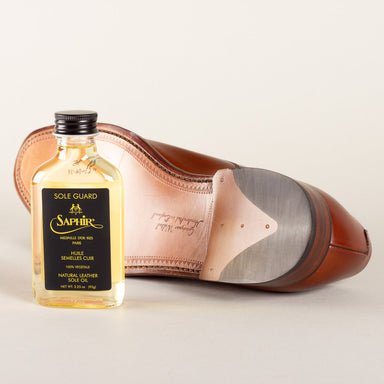
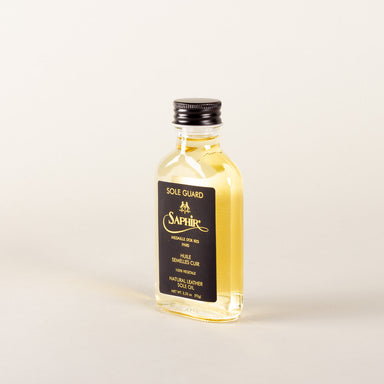 Saphir Médaille d'Or
Saphir Médaille d'OrSole guard
€20,65Saphir Médaille d'Or Sole Guard 100ml. This protective vegetal oil is specially formulated to offer the best protection for the exterior of your sh...
View full details -
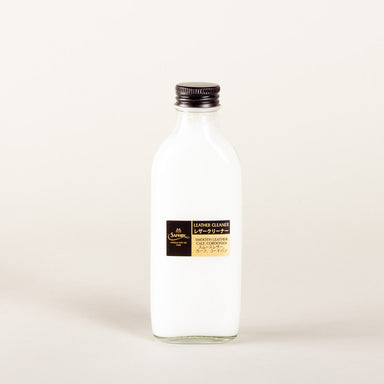
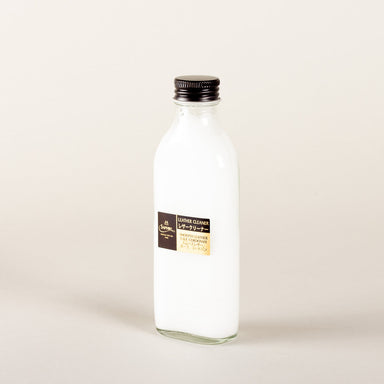 Saphir Médaille d'Or
Saphir Médaille d'OrLeather Cleaner
€19,00Saphir Médaille d'Or leather cleaner This cleaner is great at removing old shoe polish from your shoes to give them a fresh start. The product is e...
View full details
You might be also interested in these guides

Advanced shoe shoe shine guide
Want to lift your shoe shine to the next level? Be sure to give our advanced shoe shine guide a read.

Suede and nubuck care guide
Freshen up your suede and nubuck shoes with this quick and easy maintenance guide.

Sneaker cleaning
Make your sneakers as good as new with this sneaker cleaning guide.

Shoe trees
Keep your shoes in shape with a pair of well made wooden shoe trees.

Advanced shoe shoe shine guide
Want to lift your shoe shine to the next level? Be sure to give our advanced shoe shine guide a read.

Suede and nubuck care guide
Freshen up your suede and nubuck shoes with this quick and easy maintenance guide.

Sneaker cleaning
Make your sneakers as good as new with this sneaker cleaning guide.

Shoe trees
Keep your shoes in shape with a pair of well made wooden shoe trees.


